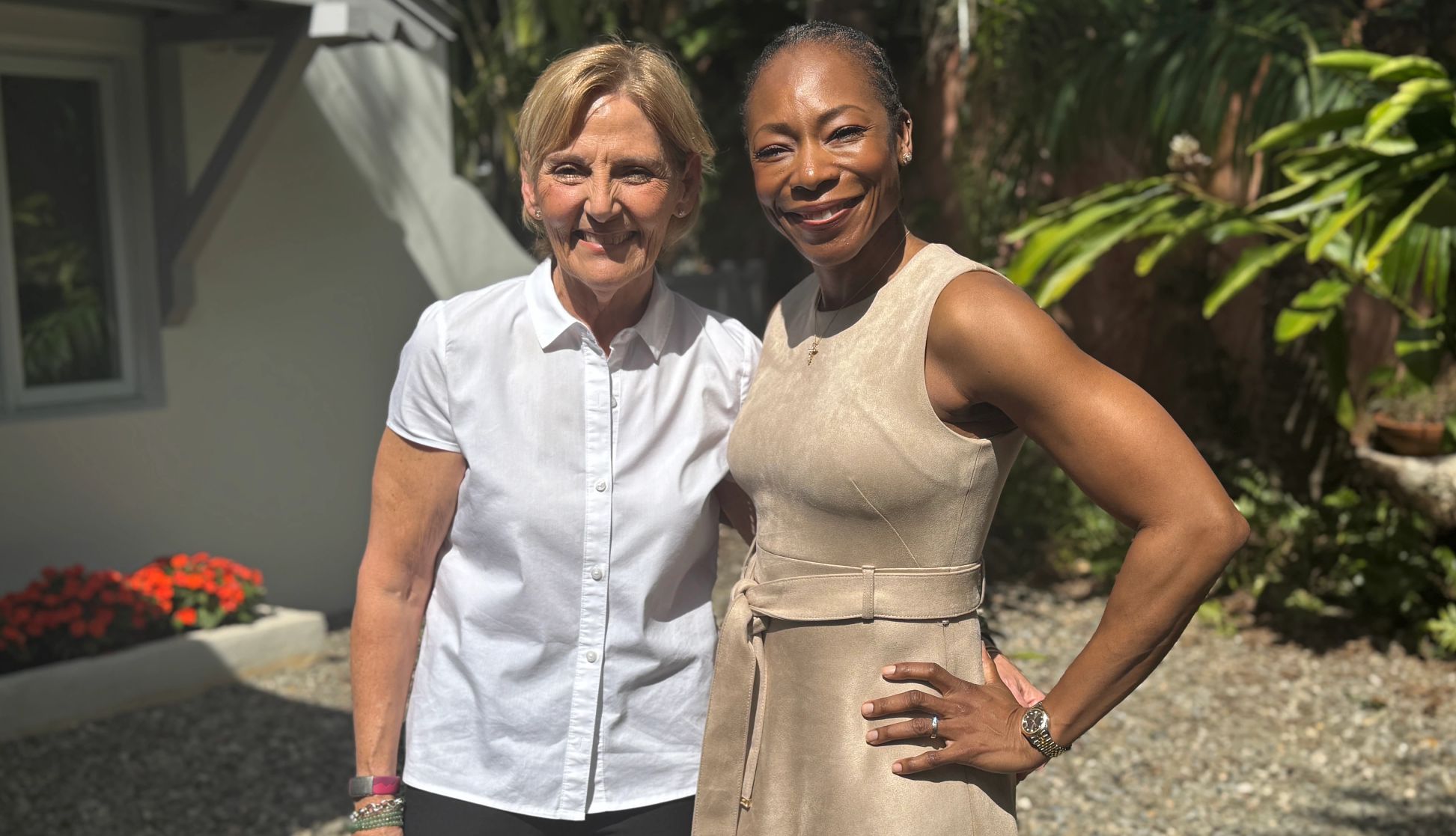
- Select a language for the TTS:
- UK English Female
- UK English Male
- US English Female
- US English Male
- Australian Female
- Australian Male
- Language selected: (auto detect) - EN
Play all audios:
AARP’s CEO Dr. Myechia Minter-Jordan visited Ana Tris, 66, at her home in Miami, to hear about the challenges caregivers face every day. It’s been eight years since Ana and her husband,
Javier Gonzalez, brought her mother, Elvira Tris, 91, who has Alzheimer’s disease, to live with them. “I don’t regret it,” Ana told Minter-Jordan. “You do it because you love [them], of
course. And you also want to give back because I had a great life.” There’s an emotional cost to caregiving, says Ana: grief because Elvira no longer recognizes her grandchildren and
anger at the disease that has ravaged her mother’s brain. “The person that I'm caregiving, it’s not my mother anymore.” She admits, “There are days I just want to cry.” Ana and her
husband weren’t new to caregiving. They cared for Gonzalez’ parents and Ana’s father. But Elvira, the last, has put the most financial stress on them, says Ana. Elvira has round-the-clock
home health aides. To pay for it, Ana and her husband are using their savings —money they hoped to use in their own old age. JOIN OUR FIGHT FOR CAREGIVERS Sign up to become part of AARP’s
online advocacy network and help family caregivers get the support they need. The high financial burden of caregiving is the reason AARP is advocating for the Credit for Caring Act. The
legislation could offer up to $5,000 in federal tax credits to people caring for loved ones. Most Americans support it. A recent AARP survey shows 84 percent of respondents are in favor of
enacting the legislation. STARTING THE CAREGIVING JOURNEY Ana says she knew something was wrong the day her mother asked for help writing a check. Fiercely independent and private about
her finances, Elvira’s behavior was unusual . Ana took her to a neurologist. Elvira moved into her daughter’s house permanently. Ana left her corporate career, becoming her mother’s
caregiver, health surrogate and legal guardian. “I thought I could do this,” says Ana. But after two years of caring for her mother on her own, Ana, whois an only child, and Gonzalez
realized they needed help. At first, home health aides were hired for day shifts. Then they were needed 24/7. ADVOCATING FOR OTHER CAREGIVERS Despite going through their savings and upending
her plans for retirement, Ana knows she is lucky to be able to keep her mother at home. However, she worries about other caregivers who may not have the same resources. If she were able to
talk to Congress directly, asked Minter-Jordan, what would Ana want them to understand about caregiving and its impact on her life? “The number one thing is the sacrifice,” said Ana. Not
only the financial cost but the emotional cost that comes with caring for your mother and wondering where to get assistance. “They need to understand that we are people who are taking care
of people that we love. … They need to support us.”





:max_bytes(150000):strip_icc():focal(319x0:321x2)/people_social_image-60e0c8af9eb14624a5b55f2c29dbe25b.png)

